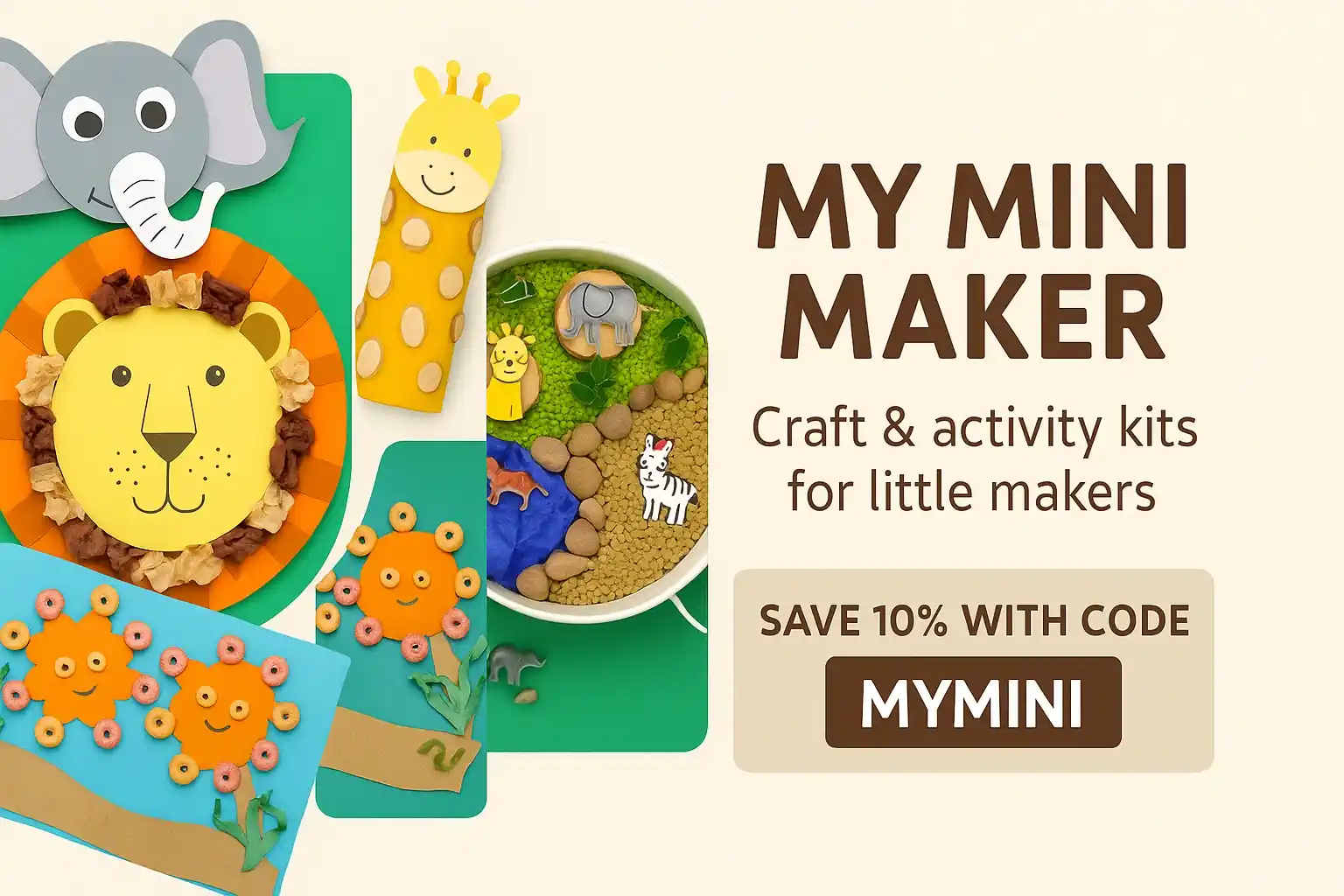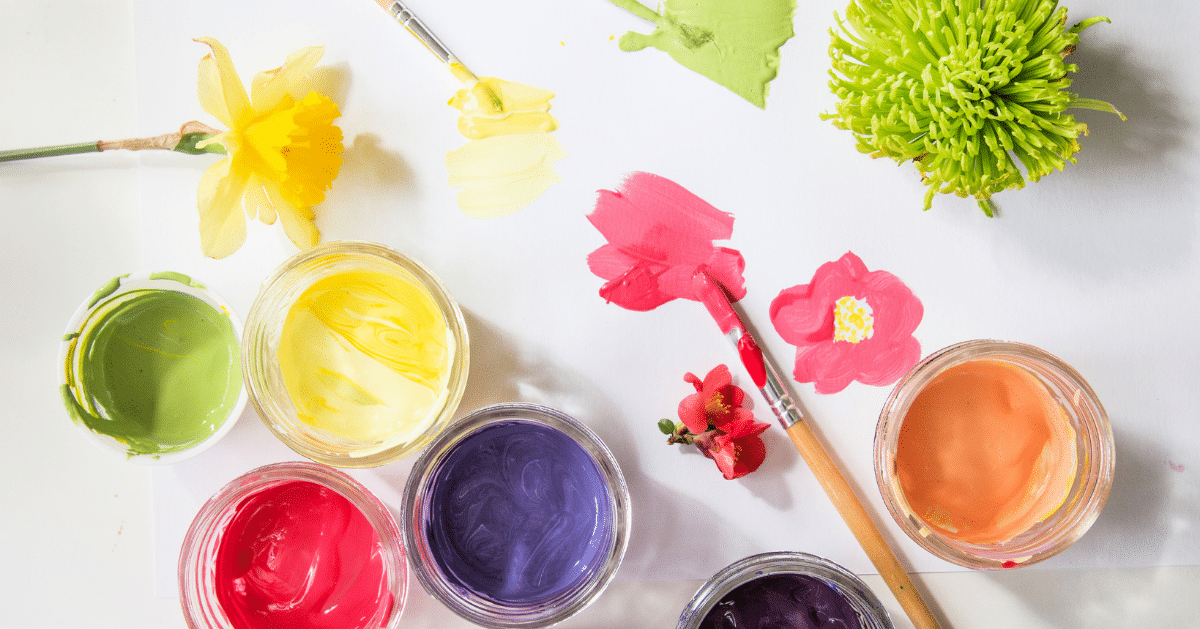Elevate Outdoor Exploration: Fun Activities for Kids’ Nature Walks
Going on a nature walk with children presents a fantastic opportunity to connect them with the natural world, foster curiosity, and encourage active learning. But how do you transform a simple stroll into an engaging and memorable experience? This guide offers a collection of activities, both for during your walk and after you return home, designed to spark imagination and deepen appreciation for the outdoors. According to a 2023 study by the National Recreation and Park Association, children who regularly engage in outdoor activities demonstrate improved focus, reduced stress levels, and increased creativity.
Engaging Activities During Your Nature Walk
Table of Contents
- Engaging Activities During Your Nature Walk
- 1. Embark on a Nature Scavenger Hunt
- 2. Equip Your Explorer: Binoculars & Magnifying Glasses
- Extending the Adventure: Activities for After the Walk
- 3. Nature Journaling & Sketching
- 4. Create Nature Art
- 5. Storytelling & Role-Playing
- 6. Plant a Seed or Start a Garden
- Inspiring Creativity: Nature-Based Activities for Children
- Preparing for Your Outdoor Adventure
- Gathering Natural Materials
- Transforming Nature’s Bounty into Art
- Creating a Nature Suncatcher
- Establishing a Seasonal Nature Table
- Mixing and Painting a Rainbow
- Beyond the Activities: Cultivating a Connection with Nature
- Unleashing Creativity: Nature-Inspired Art Activities for Kids
- The Benefits of Nature Art
- Simple Nature Art Projects to Get Started
- Expanding the Creative Horizon: Beyond the Basics
- Fostering Creativity Through Process, Not Product
- Unlocking Wonder: Creative Nature Walks for Children
- Beyond the Path: Transforming Walks into Explorations
- Engaging Activities to Spark Curiosity
- The Power of a Scavenger Hunt
- Documenting the Adventure: Nature Journals
Transform your walk into an adventure with these interactive ideas. Remember, the goal isn’t to complete every activity, but to choose one or two that resonate with your child’s interests and the environment you’re exploring.
1. Embark on a Nature Scavenger Hunt
A scavenger hunt is a classic for a reason! It encourages observation, problem-solving, and a sense of accomplishment. Instead of a pre-printed list, consider tailoring the hunt to your specific location and season. For example, a forest walk might focus on finding different types of leaves, while a beach trip could involve collecting seashells or identifying bird tracks.
Create a Custom Hunt: Design a list of items unique to your area – a specific type of wildflower, a feather from a particular bird, or a rock with a unique pattern.
Color Matching Challenge: Bring along paint chips or color swatches and challenge your child to find natural elements that match the shades. This is a great way to introduce color theory and observation skills. You can find more inspiration for color-based activities on our site: Color Scavenger Hunt Ideas.
Open-Ended Exploration: Sometimes, the simplest approach is best. Ask a question like, “How many different types of insects can you find?” or “Can you find something smooth and something rough?”
(Click on the image above to download a printable nature scavenger hunt!)
2. Equip Your Explorer: Binoculars & Magnifying Glasses
Providing tools for closer inspection can dramatically enhance a child’s engagement with nature. A pair of binoculars allows them to observe birds, insects, and distant landscapes, while a magnifying glass reveals the intricate details of leaves, flowers, and rocks.
Birdwatching Basics: Encourage your child to identify different bird species by their songs, colors, and behaviors. Resources like the Audubon Society website can be incredibly helpful.
Miniature World Discovery: Use the magnifying glass to examine the textures and patterns of natural objects. This is a fantastic way to introduce concepts like symmetry and geometry.
Invest in Quality Tools: While expensive equipment isn’t necessary, durable and easy-to-use binoculars and magnifying glasses will encourage more frequent use. Check out our guide to essential outdoor gear for kids: Best Outdoor Gear for Kids.
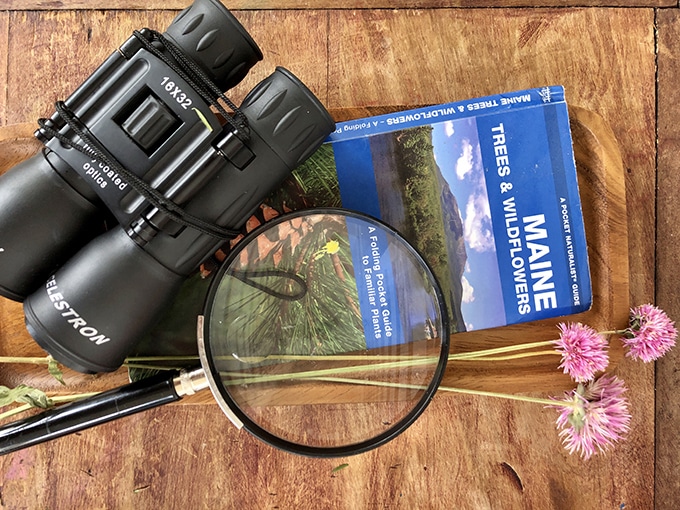
Extending the Adventure: Activities for After the Walk
The learning doesn’t have to stop when you return home! These activities provide opportunities to reflect on the experience and deepen understanding.
3. Nature Journaling & Sketching
Encourage your child to document their observations in a nature journal. This can include drawings, paintings, written descriptions, or pressed flowers and leaves.
Focus on Details: Encourage your child to pay attention to the shapes, colors, and textures of natural objects.
Creative Expression: There’s no right or wrong way to create a nature journal. Encourage your child to experiment with different art materials and techniques.
Promote Scientific Observation: Encourage your child to label their drawings and write down observations about the plants and animals they encounter.
4. Create Nature Art
Transform collected natural materials into beautiful works of art.
Leaf Rubbings: Place leaves under a piece of paper and rub over them with crayons or colored pencils to create textured patterns.
Nature Collages: Glue leaves, flowers, twigs, and other natural materials onto a piece of paper or cardboard to create a collage.
Mud Painting: Mix mud with water to create a natural paint and use it to create artwork on rocks, paper, or cardboard.
5. Storytelling & Role-Playing
Encourage your child to create stories inspired by their nature walk.
Animal Characters: Ask your child to imagine what it would be like to be one of the animals they saw on their walk.
Adventure Tales: Encourage your child to create a story about an adventure that takes place in the natural setting they explored.
Dramatic Play: Encourage your child to act out scenes from their story or create a play based on their nature walk.
6. Plant a Seed or Start a Garden
Connect your child to the life cycle of plants by planting a seed or starting a small garden.
Choose Easy-to-Grow Plants: Sunflowers, beans, and radishes are all easy-to-grow plants that are perfect for beginners.
Teach Responsibility: Assign your child the task of watering and caring for their plants.
Observe Growth: Encourage your child to observe the growth of their plants and document their observations in a journal. For more gardening tips, check out our guide to creating a kid-friendly garden: Creating a Kid-Friendly Garden.
By incorporating these activities into your next nature walk, you can transform a simple outing into a memorable and enriching experience for your child. Remember, the most important thing is to foster a sense of wonder and appreciation for the natural world.## Reconnect with Nature: Engaging Activities for a Family Walk
In today’s fast-paced world, it’s more important than ever to disconnect from screens and reconnect with the natural world. A simple walk outdoors can be a powerful experience for children, fostering curiosity, creativity, and a lifelong appreciation for the environment. But how do you make a nature walk truly engaging for kids of all ages? Here are five ideas to transform an ordinary stroll into an unforgettable adventure.
### 1. The Nature Scavenger Hunt: A Quest for Discovery
Instead of simply walking *through* nature, encourage your children to actively *search* within it. Create a simple scavenger hunt list beforehand, tailored to your location and the season. This could include items like a smooth grey stone, a feather, a leaf with five points, something red, or a Y-shaped twig. According to a 2023 study by the National Recreation and Park Association, children who participate in regular outdoor activities demonstrate improved focus and problem-solving skills. The thrill of the hunt transforms the walk into a quest, encouraging observation and attention to detail.
### 2. Become a Backyard Birder: Identifying Feathered Friends
Birds are everywhere, even in urban environments! Equip your children with a pocket bird guide – or utilize a bird identification app on your phone – and challenge them to identify as many different species as you encounter. Did you know that over 400 different bird species migrate through North America each year? Learning to recognize birds by their songs and plumage is a fantastic way to develop observational skills and an understanding of local ecosystems. For a deeper dive into birdwatching, explore resources on our website about beginner birdwatching tips.
### 3. “I Spy” with Nature: A Game of Keen Observation
Classic games are classic for a reason! “I Spy” is a fantastic way to engage children’s senses and encourage them to describe what they see. Instead of focusing on colors, challenge them to spy something textured, fragrant, or moving. For example, “I spy with my little eye, something rough and brown” or “I spy something that makes a buzzing sound.” This simple game sharpens observation skills and encourages descriptive language.
### 4. Bark and Leaf Rubbings: Capturing Nature’s Textures
Bring along some paper and peeled crayons or oil pastels to create nature rubbings. This is a wonderfully tactile activity that allows children to capture the textures of tree bark and leaves. Place the paper over the bark or leaf and gently rub with the side of the crayon. Encourage them to identify the tree species based on the bark pattern. Extend the activity by researching the trees you encounter and labeling the rubbings. For more creative art ideas inspired by nature, check out our guide to nature-inspired art projects.
### 5. The Sound Hunt: Listening to the Natural World
In a world filled with noise, it’s easy to forget the beauty of natural sounds. Embark on a sound hunt, challenging your children to identify all the sounds they can hear – birdsong, rustling leaves, the wind, flowing water. Encourage them to close their eyes and focus on the sounds around them. This activity cultivates mindful listening skills and an appreciation for the subtle sounds of nature. We also have a detailed article on mindful nature walks that you might find helpful.
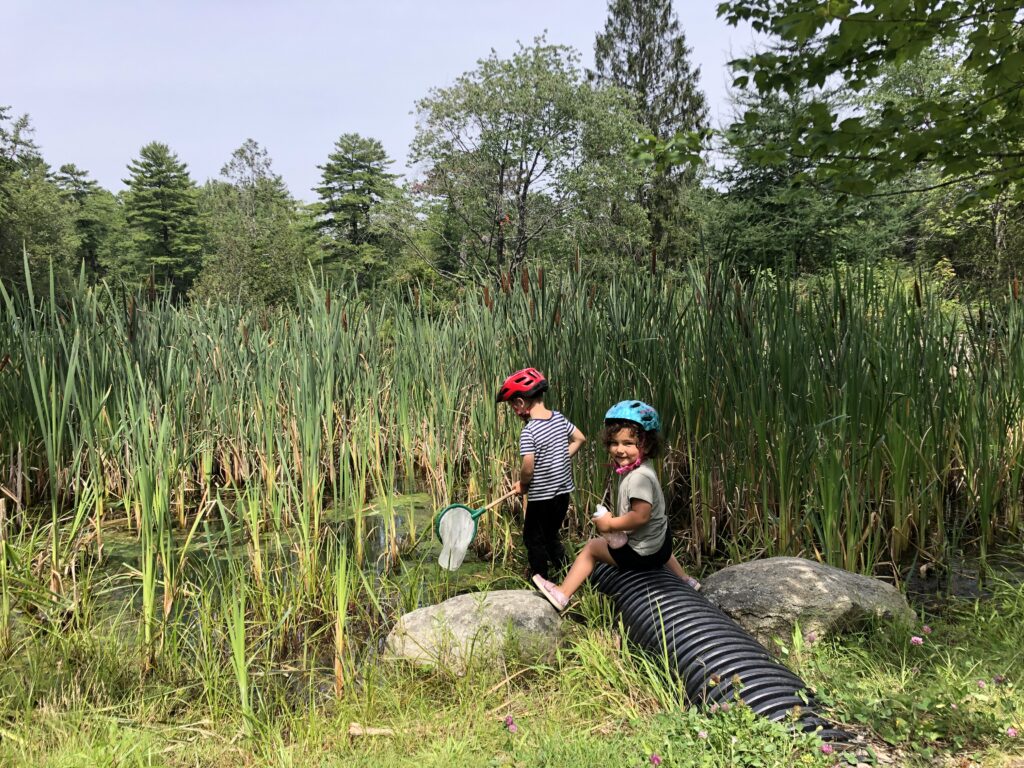
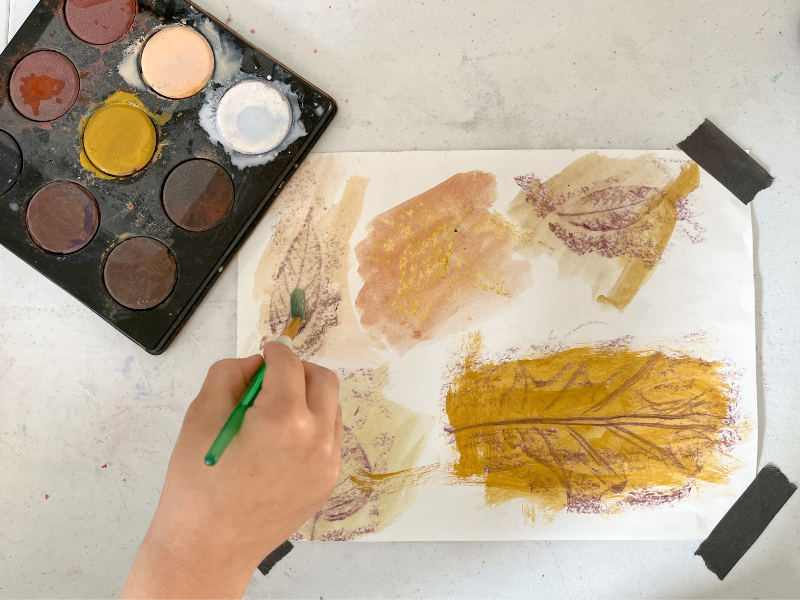
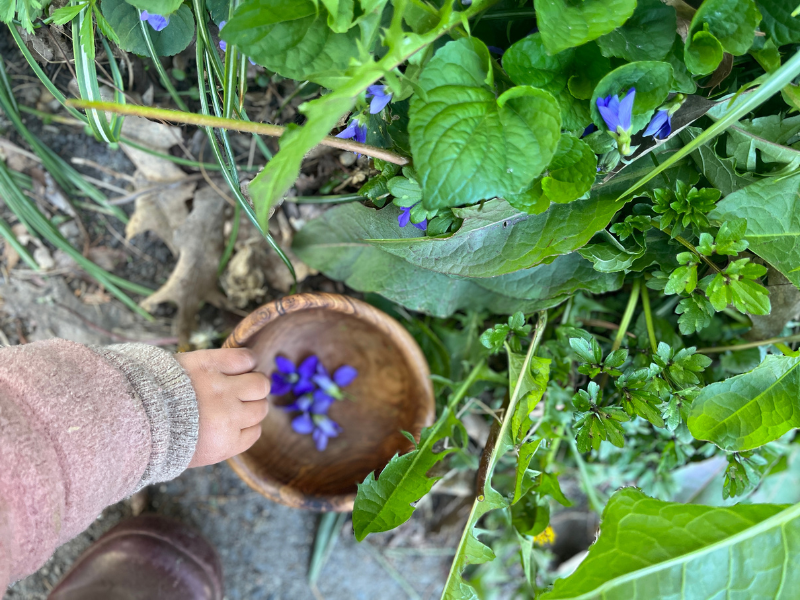
Inspiring Creativity: Nature-Based Activities for Children
Connecting children with the natural world fosters a sense of wonder and provides endless opportunities for learning and creative expression. A simple walk outdoors can spark imagination and lead to a wealth of engaging activities. This guide explores how to transform a nature walk into a springboard for artistic endeavors and hands-on exploration.
Preparing for Your Outdoor Adventure
Before heading out, encourage children to think like naturalists. Discuss what they might discover – different types of leaves, interesting rocks, perhaps even signs of wildlife. Equip them with a small bag or basket to collect treasures responsibly, emphasizing the importance of leaving the environment as they found it. A magnifying glass can add another layer of fascination, allowing for close examination of tiny details.
Gathering Natural Materials
During your walk, encourage children to collect a variety of natural items. Flowers, leaves in various colors and shapes, seed pods, feathers, smooth stones, and interesting twigs are all excellent choices. Remind them to look beyond the obvious – a fallen pinecone, a piece of bark, or a uniquely shaped pebble can be just as inspiring. If you’re planning specific crafts, like the rainbow painting activity described below, encourage them to gather items in a wide range of colors.
Transforming Nature’s Bounty into Art
Once you’ve returned home with your collection of natural treasures, the real fun begins! Here are a few ideas to inspire creativity:
Creating a Nature Suncatcher
Suncatchers are a beautiful way to bring the colors of nature indoors. A simple project involves using contact paper and pressing flower petals and leaves onto the sticky surface. For a more elaborate design, consider creating a 3D nature suncatcher. Cut out shapes from cardboard or sturdy paper, cover them with contact paper, and then arrange your collected flowers and leaves to create a stunning stained-glass effect. This is a fantastic way to explore color, texture, and design. For more suncatcher ideas, explore our guide to flower suncatchers.
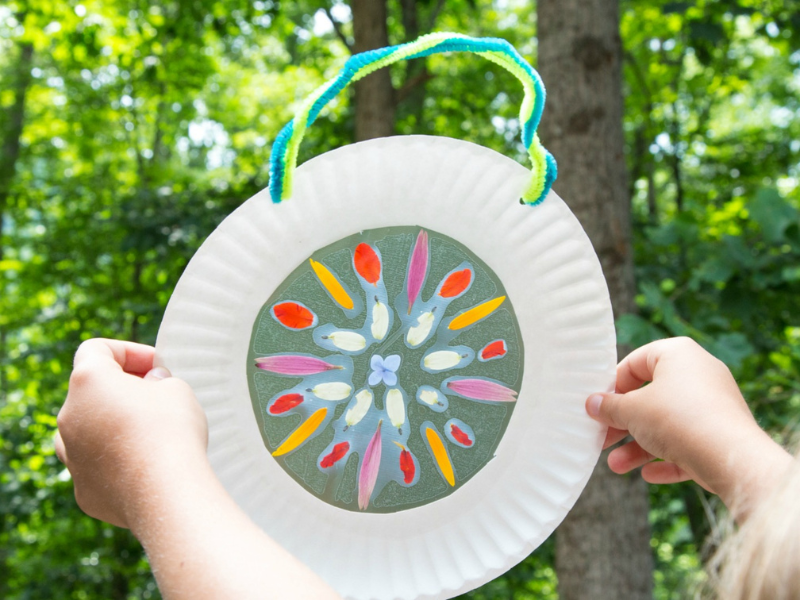
Establishing a Seasonal Nature Table
A nature table is a wonderful way to display and celebrate the changing seasons. Arrange your collected flowers, plant cuttings, sticks, pinecones, feathers, and rocks on a dedicated table or shelf. Add magnifying glasses, nature guides, and small figurines to encourage further exploration and imaginative play. This creates a focal point for learning and appreciation of the natural world. Consider incorporating play silks or miniature animals to create a seasonal diorama.

Mixing and Painting a Rainbow
Unleash your child’s inner artist by creating a rainbow using natural pigments. Gather colorful flowers, berries (with adult supervision!), and leaves. Crush them gently to release their natural dyes, then mix with a small amount of water to create a paint-like consistency. Use this natural paint to create a vibrant rainbow on paper or canvas. This activity is a fantastic way to learn about color mixing and the beauty of natural materials. For more inspiration on creative art projects, check out our article on art projects for kids.
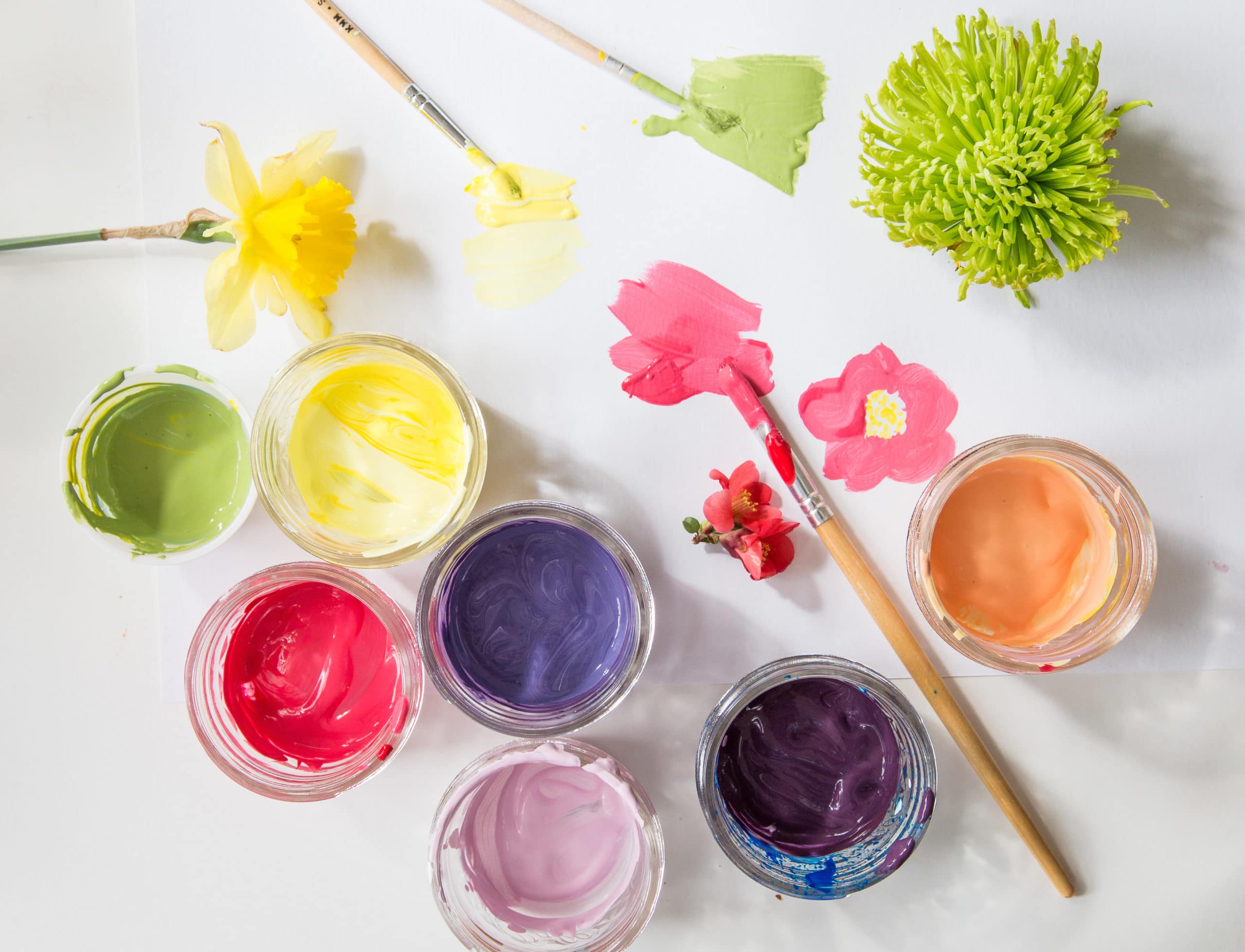
Beyond the Activities: Cultivating a Connection with Nature
These activities are just a starting point. The most important thing is to encourage children to explore, observe, and appreciate the natural world around them. By fostering a connection with nature, you’re not only sparking their creativity but also instilling a lifelong love of learning and environmental stewardship. Don’t forget to explore our resources on nature activities for kids for even more ideas.## Unleash Creativity: Inspiring Art Activities with Nature’s Treasures
Connecting with the natural world offers a wealth of inspiration for artistic expression. Beyond simply enjoying the outdoors, children (and adults!) can transform found objects – leaves, twigs, stones – into captivating works of art. These activities not only foster creativity but also encourage observation, mindfulness, and an appreciation for the environment. Let’s explore some engaging art projects that bring nature indoors.
### 1. Nature Printing: Capturing Textures and Forms
Instead of traditional painting, consider the unique technique of nature printing. This involves using the actual textures of leaves, flowers, and other natural elements to create impressions on paper. Simply apply a thin layer of washable paint to the surface of a leaf or flower and press it firmly onto paper. Experiment with different colors and layering techniques to achieve interesting effects. This is a fantastic way to introduce children to printmaking concepts and explore the intricate details of natural forms. For more ideas on engaging kids with art, explore our guide to essential art supplies for kids.
### 2. Earth Pigment Creation: From Soil to Stunning Shades
Did you know you can create your own paints from materials found in nature? This activity is a wonderful way to connect with the earth and understand the origins of color. Collect soil, berries, or flower petals and grind them into a fine powder. Mix the powder with a binder, such as water or a natural gum, to create a unique earth pigment. These pigments can then be used for painting, drawing, or even creating natural dyes. This process teaches children about color mixing and the power of natural resources.
### 3. Mixed Media Nature Collages: A Symphony of Textures
Combine the beauty of natural materials with the versatility of mixed media to create stunning collages. Gather leaves, twigs, petals, and other found objects during a nature walk. Then, combine these materials with paint, paper, fabric, and other art supplies to create a layered and textured artwork. Encourage children to experiment with different compositions and arrangements to express their creativity. This activity promotes fine motor skills and encourages imaginative storytelling.
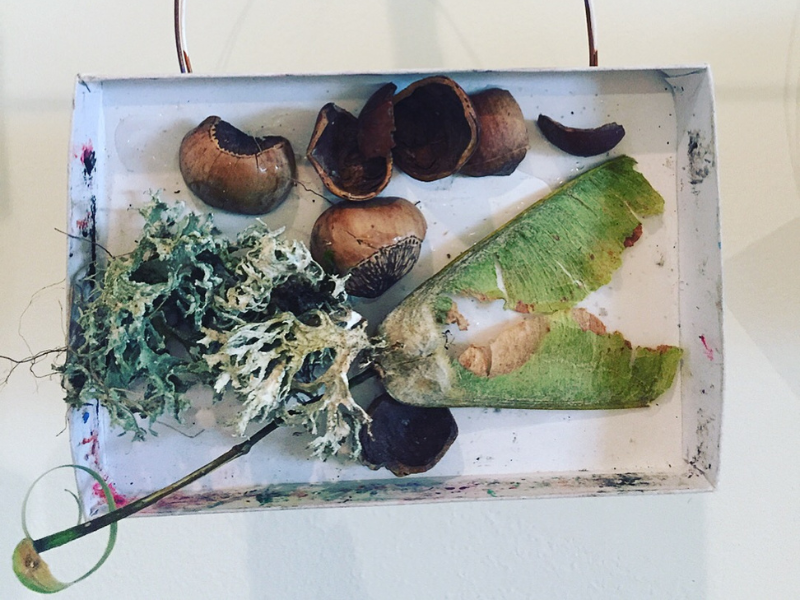
Bring the outdoors in by creating miniature nature dioramas. Collect small natural items like pinecones, leaves, seed pods, and pebbles during your explorations. Arrange these materials inside a small box or container to create a tiny landscape. Encourage children to add details like miniature animals or structures to bring their dioramas to life. This activity fosters spatial reasoning and encourages imaginative play.
### 5. Nature-Inspired Mobiles: A Delicate Dance of Form and Color
Create a whimsical and enchanting nature mobile by suspending natural materials from a branch or hoop. Gather lightweight items like dried leaves, feathers, and small seed pods. Paint some air dry clay beads and string them together with the natural materials to create a balanced and visually appealing mobile. This activity promotes fine motor skills and encourages an appreciation for natural beauty.
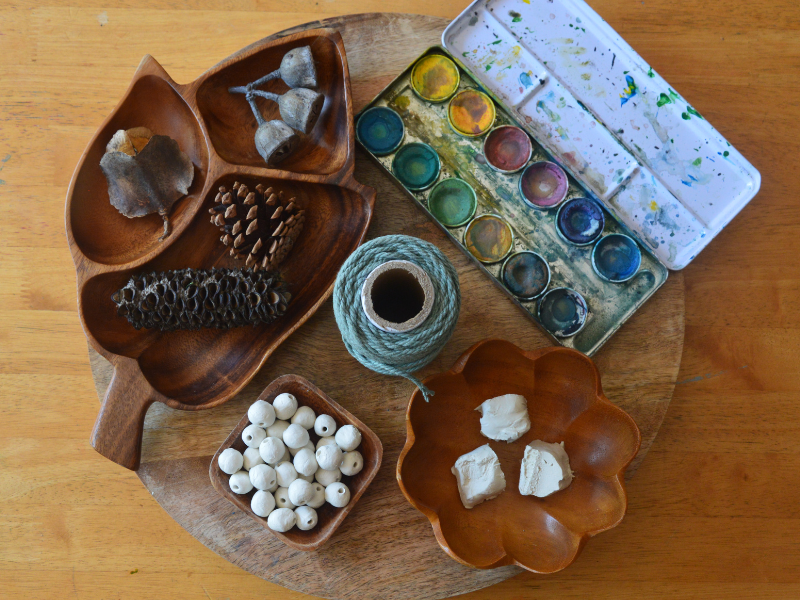
Encourage children to sharpen their observational skills by drawing natural treasures. Provide them with oil pastels, colored pencils, or watercolors and ask them to carefully observe the shapes, textures, and colors of leaves, flowers, or stones. Encourage them to focus on details and capture the essence of each object. This activity not only improves artistic skills but also fosters mindfulness and an appreciation for the beauty of the natural world. For more inspiration on developing artistic talent, check out our article on essential art techniques for beginners.
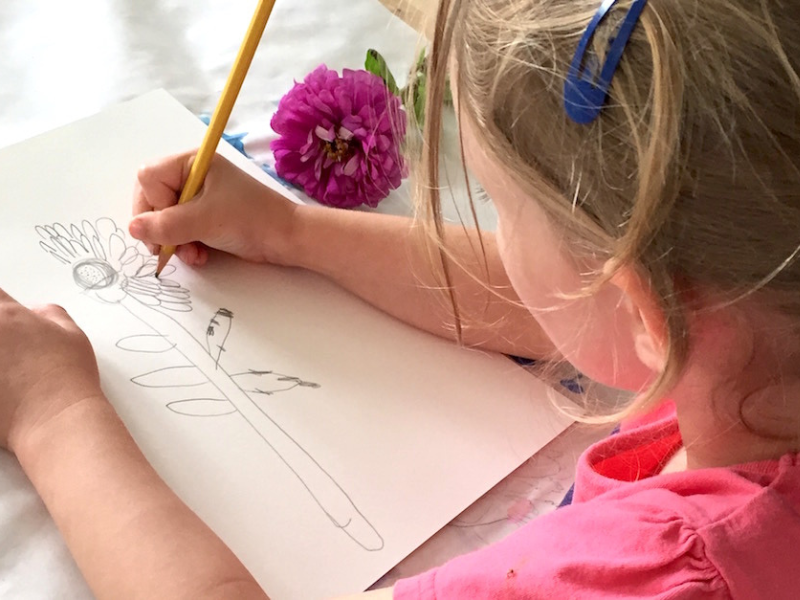
Connecting children with the natural world is more important than ever. Beyond the fresh air and exercise, nature provides a wealth of inspiration for creativity and learning. These activities encourage observation, artistic expression, and a deeper appreciation for the environment. Let’s explore some engaging ways to bring the outdoors into your child’s playtime.
### The Benefits of Nature-Based Activities
Before diving into specific ideas, it’s worth noting *why* these activities are so valuable. Studies show that time spent in nature reduces stress, boosts attention spans, and fosters a sense of wonder. Furthermore, engaging with natural materials stimulates different senses and encourages open-ended exploration – crucial for developing problem-solving skills and imagination. For children interested in art, these experiences can be a springboard for developing their unique artistic voice – learn more about fostering creativity through art with our guide to essential art supplies for kids.
### 1. Nature Scavenger Hunts: A Classic for a Reason
A scavenger hunt is a fantastic way to get kids actively exploring their surroundings. Create a list of items to find – a smooth stone, a red leaf, a feather, a specific type of flower – or use picture cards for younger children. This activity encourages observation skills and teaches children to identify different elements of nature. Consider adding a competitive element for older children by timing the hunt or awarding points for rare finds.
### 2. Nature Collages: Bringing the Outdoors In
Gather leaves, flowers, twigs, and other natural materials during a walk. Then, provide children with paper, glue, and other craft supplies to create nature collages. This is a wonderful way to encourage creativity and fine motor skills. Experiment with different arrangements and textures to create unique and beautiful artwork.
### 3. Bark Rubbings: Capturing Texture and Detail
Bark rubbings are a simple yet effective way to capture the texture and patterns of tree bark. Place a piece of paper over the bark and rub over it with a crayon or colored pencil. This activity encourages children to observe the details of tree bark and appreciate the unique characteristics of different trees.
### 4. Nature Mandalas: Creating Temporary Art
Encourage children to create temporary art using natural materials. Gather leaves, flowers, stones, and twigs and arrange them in a circular pattern on the ground to create a nature mandala. This activity encourages creativity, mindfulness, and an appreciation for the beauty of nature.
### 5. Nature Weaving: Combining Natural and Crafted Materials
Set up a simple loom using sticks or a cardboard frame. Then, encourage children to weave natural materials – grasses, leaves, flowers – into the loom to create a nature weaving. This activity encourages fine motor skills, creativity, and an appreciation for the textures and colors of nature.
### 6. Nature-Inspired Drawing & Painting: Observation in Action
Provide children with drawing or painting supplies and encourage them to draw or paint what they see in nature. This could be a landscape, a flower, a tree, or an animal. Encourage them to pay attention to the colors, shapes, and textures of the natural world. For a unique twist, try using natural pigments made from berries or flowers. If your child loves to draw, explore our guide to drawing tablets to elevate their art.
### 7. Clay Nature Prints: Preserving Natural Impressions
Press leaves, flowers, or other natural materials into air-dry clay to create nature prints. This is a fun and tactile activity that allows children to preserve the beauty of nature. Once the clay is dry, the prints can be hung as ornaments, used as pendants, or displayed as artwork. Consider adding a glaze or paint to enhance the colors and textures.
### 8. Nature Shadow Boxes: Miniature Worlds
Combine observational drawing with real nature items by creating special little shadow boxes. Gather small natural objects – feathers, leaves, flowers, twigs – and arrange them inside a small box or frame. Encourage children to draw or paint the scene inside the box, creating a miniature world inspired by nature.
These activities are just a starting point. The possibilities are endless when it comes to connecting children with the natural world. Encourage exploration, creativity, and a sense of wonder, and you’ll be amazed at what they discover. And don’t forget to check out our article on craft kits for kids for more inspiration!
Unleashing Creativity: Nature-Inspired Art Activities for Kids
Connecting children with the natural world is more important than ever. Beyond the scientific benefits of understanding ecosystems, engaging with nature fosters creativity, mindfulness, and a sense of wonder. One of the most accessible and rewarding ways to achieve this is through nature-based art. This isn’t about creating perfect replicas; it’s about process, exploration, and allowing children to express themselves using the beautiful materials provided by the outdoors.
The Benefits of Nature Art
Why choose nature as your art medium? The advantages are numerous. Firstly, it’s incredibly cost-effective – the primary materials are freely available! Secondly, it encourages resourcefulness and problem-solving. Children learn to see potential in fallen leaves, twigs, and pebbles, transforming them into something new. Furthermore, nature art inherently promotes sensory exploration. The textures of bark, the scent of wildflowers, and the visual variety of colors stimulate a child’s senses in a way that traditional art supplies often don’t. Studies show that time spent in nature can reduce stress and improve cognitive function, making it a powerful tool for holistic child development.
Simple Nature Art Projects to Get Started
There’s a wealth of possibilities when it comes to nature-based art. Here are a few ideas to spark your imagination:
Nature Collages: A classic for a reason! Collect leaves, flowers, grass, and small twigs. Provide children with paper or cardboard and glue (or a glue stick) and let them create their own unique compositions. Encourage them to tell a story with their collage.
Leaf Rubbings: Place leaves under a piece of paper and rub over them with crayons or colored pencils. This is a fantastic way to explore texture and pattern.
Stick Sculptures: Gather sticks of varying sizes and use clay, playdough, or even twine to connect them and create sculptures. This encourages spatial reasoning and problem-solving.
Flower Petal Art: Use flower petals to create colorful mosaics or patterns on paper. This is a delicate activity that encourages fine motor skills.
Mud Painting: Yes, you read that right! Mix mud with water to create a natural paint. Provide brushes and paper (or even large rocks) and let children create their own earthy masterpieces. This is best done outdoors!
Expanding the Creative Horizon: Beyond the Basics
Once your child is comfortable with these basic techniques, you can introduce more complex projects. Consider creating nature mandalas, building fairy houses from natural materials, or even creating land art installations. Don’t be afraid to experiment with different materials and techniques.
For inspiration and a curated collection of ideas, explore our comprehensive guide to nature crafts for kids (https://thetrendytype.com/nature-and-garden-crafts-for-kids). We also offer a fantastic resource for younger children, with 5 nature-based play ideas for toddlers and preschoolers (https://thetrendytype.com/5-nature-based-play-ideas-for-toddlers-and-preschoolers) to help them connect with the outdoors in a playful and engaging way.
Fostering Creativity Through Process, Not Product
The most important thing to remember is that nature art is about the process, not the product*. Encourage your child to explore, experiment, and express themselves freely. Don’t focus on creating a “perfect” artwork. Instead, focus on the joy of discovery and the connection with nature.
If you’re looking for a way to nurture your child’s creativity year-round, consider our Nature Creativity Pack (https://thetrendytype.com/nature-creativity-pack/). This pack is filled with engaging art activities designed to inspire imagination and a love for the natural world.

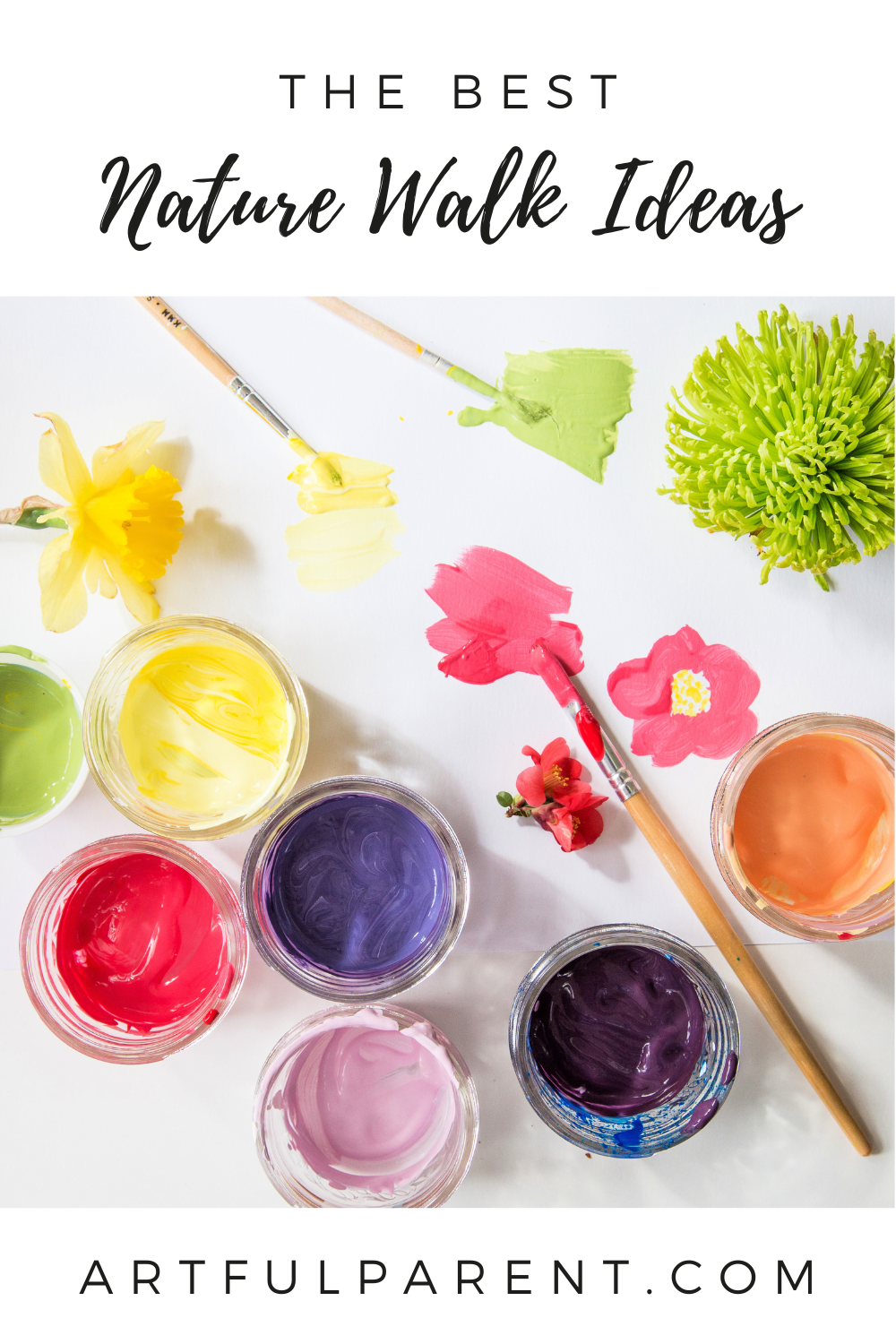
Unlocking Wonder: Creative Nature Walks for Children
In an increasingly digital world, fostering a connection with the natural environment is more crucial than ever for children’s development. Beyond simply getting fresh air, nature walks offer a wealth of opportunities for learning, creativity, and emotional well-being. Recent studies indicate that children who regularly engage with nature demonstrate improved attention spans, reduced stress levels, and a stronger sense of environmental stewardship. But how do you transform a simple walk into an enriching experience? This guide explores innovative ideas to make your next outdoor adventure truly memorable for your kids.
Beyond the Path: Transforming Walks into Explorations
Many parents envision a nature walk as a straightforward hike, but it doesn’t have to be. Think of it as an open-ended exploration, where curiosity leads the way. Instead of dictating what children should see, encourage them to observe, question, and interact with their surroundings. For instance, rather than pointing out a bird, ask, “What sounds do you hear?” or “What do you think that bird is doing?” This shifts the focus from passive observation to active engagement.
Engaging Activities to Spark Curiosity
Here are several ideas to elevate your nature walks:
- Nature Art Creation: Bring along paper and crayons or watercolors and encourage children to create rubbings of leaves, bark, and flowers. Alternatively, gather natural materials like twigs, pebbles, and petals to create land art installations directly on the forest floor. This activity blends artistic expression with environmental awareness.
- Sensory Scavenger Hunt: Instead of a traditional list of items to find, create a sensory scavenger hunt. Ask children to find something rough, something smooth, something that smells sweet, or something that makes a specific sound. This encourages them to use all their senses to explore the environment.
- Storytelling in Nature: Pause during your walk and invite children to create a story inspired by their surroundings. What adventures might the trees have witnessed? What creatures live in the undergrowth? This fosters imagination and narrative skills.
- Miniature Ecosystem Investigation: Encourage children to examine small areas of the forest floor – a patch of moss, a decaying log, or a cluster of wildflowers. What creatures and plants live there? How do they interact with each other? This introduces basic ecological concepts.
- Nature’s Palette: Challenge children to find different shades of a single color in nature. For example, how many shades of green can they discover? This sharpens observation skills and introduces color theory.
- Build a Fairy House or Gnome Home: Using only natural materials found on the walk, children can construct miniature dwellings for imaginary creatures. This encourages creativity, problem-solving, and respect for the environment.
- Leaf Identification & Collection: Learn to identify different types of leaves and create a collection. This is a great way to introduce botany and learn about local plant life. Consider pressing the leaves when you get home to preserve your findings. For more information on identifying plants, explore resources on beginner gardening.
The Power of a Scavenger Hunt
Scavenger hunts are a classic for a reason. They provide structure and excitement while encouraging exploration. However, move beyond simply listing items to find. Create a themed scavenger hunt, such as “Signs of Spring” or “Forest Creatures.” Or, as mentioned earlier, focus on sensory experiences. To make it even more engaging, create a printable scavenger hunt list that children can check off as they find each item. You can find inspiration and free printables for nature-based activities on outdoor activities for kids.
Documenting the Adventure: Nature Journals
Encourage children to document their observations in a nature journal. This can be as simple as a notebook and pencil, or a more elaborate scrapbook with pressed flowers and drawings. Journaling encourages careful observation, descriptive writing, and artistic expression. It also creates a lasting record of their adventures. Consider incorporating sketches, leaf rubbings, and written observations. Learning to sketch nature can be enhanced with resources on art supplies for kids.
By embracing these ideas, you can transform a simple nature walk into a memorable and enriching experience for your children, fostering a lifelong love of the natural world.
